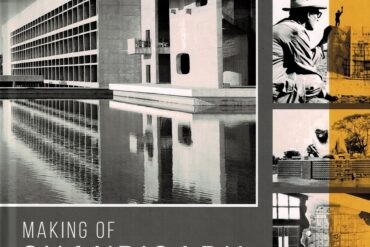Dhaka, June 27 (IANS) As over-fishing in the Bay of Bengal takes a toll on the population of hilsa – the silvery tropical fish savoured in India and Bangladesh as the quintessential Bengali delicacy – experts from both the countries are seeking joint initiatives to manage and preserve habitats of the prized fish and weed out perilous practices threatening its breeding.
Scientists are responding to the challenge of reviving hilsa numbers by putting under the scanner fishing practices that mercilessly wipe out juveniles and dams that deter and alter the migratory path of the fish.
“The problem of over-fishing in the bay beyond the sustainable limit is a primary cause of declining numbers. There is hardly any enforcement and the surveillance mechanism is non-existent in sea,” Sugata Hazra, director of the School of Oceanographic Studies at Kolkata’s Jadavpur University, told IANS.
Hilsa, or ilish as it is known among Bengalis, like salmon, migrates from seawater to fresh water to breed. After laying its eggs, the fish dies and the newly-hatched ones go back to the sea and repeat the cycle.
The expensive fish is widely consumed in India and Bangladesh, particularly on special occasions, in a variety of delectable dishes.
Flanking the world’s largest bay that nurses the highest volume of hilsa, Bangladesh accounts for half of its global production, while India supplies one-fourth of the total yield.
While hilsa production has decreased from 80,000 tonnes in 2001 to 12,000 tonnes in 2012 in India, Bangladesh has witnessed a “significant increase” in its numbers – thanks to corrective measures such as banning of fishing during the breeding season and establishment of sanctuaries.
“The ban on hilsa fishing during the breeding period is giving us a lot of good results. Establishing hilsa sanctuaries has also been highly effective. There are three in estuarine areas and a few in the rivers,” said Istiak Sobhan, programme coordinator of the International Union for Conservation of Nature, Bangladesh, where ilish production now accounts for 1.3 percent of the country’s GDP.
Sobhan was speaking at a media workshop and field trip organised by The Third Pole, The Asia Foundation and the Bangladesh Centre for Advanced Studies (BCAS) in Dhaka.
Following Bangladesh, India has recently introduced and declared three hilsa sanctuaries in West Bengal, where the mature fish can breed in peace. “Sanctuaries would deter fishermen from trapping the offspring,” Indian fisheries expert Utpal Bhaumik told IANS.
The offspring and the brood fish (mature fish used for producing eggs or spawners) can be better protected by simultaneously curbing fishing in both the countries for a specific duration.
“The ban on hilsa fishing to protect the juvenile and brood fish should be imposed in both Bangladesh and India at the same time,” said Hazra.
Coupled with fishing, indiscriminate erection of artificial structures like dams have dealt a heavy blow to hilsa’s migration pattern and severely impacted the yield from rivers, so much so that the primary harvest is now obtained from the marine estuarine regions.
“Both India and Bangladesh are facing problems because of dams that cut through the hilsa’s path. The fish can sense from which direction the water is coming and adjust its path accordingly. Whatever hilsa comes to Bangladesh through migration, a large volume goes to the Jamuna and the Meghna instead of the Ganga. We need to work unitedly with engineers to prevent artificial structures from disrupting the ecosystem,” Sobhan said.
“Farakka initially fragmented the hilsa habitat and the fisheries perished in Bihar. Riverine fishery of West Bengal does not produce more than 10 percent of hilsa now. The major catch comes from the estuarine part,” Hazra explained.
As a possible panacea, researchers are stressing on India-Bangladesh collaboration on assessing fish stocks in the bay area that will help them to zero in on the distribution of the species, the apt time to harvest and deduce when to impose bans.
“There is a lot of studies that need to be done jointly. We’ve got to get an idea about which species is from which country.. where they migrate, spawn and the like. That will give us an idea about the extent to which we can fish and the timing of the bans,” Bhaumik noted.
Sobhan added that since “there is still a substantial volume of hilsa in the bay”, such a step will provide a clearer picture about the largest catch that can be taken from the fish stock – the maximum sustainable yield – which, in turn, will establish the upper limit of fishing”.
“There has to be a balance. One can’t go on exploiting the hilsa population without knowing the limits,” Bhaumik emphasised.
(Sahana Ghosh can be contacted at [email protected])
The opinions, beliefs and viewpoints expressed by authors, news service providers on this page do not necessarily reflect the opinions, beliefs and viewpoints of Hill Post. Any views or opinions are not intended to malign any religion, ethnic group, club, organization, company, or individual.
Hill Post makes no representations as to the accuracy or completeness of any information on this site page.


